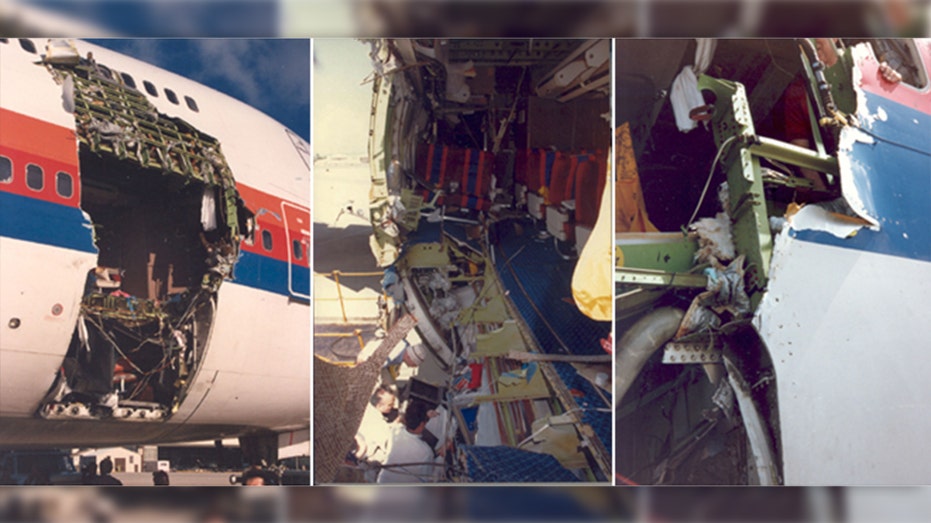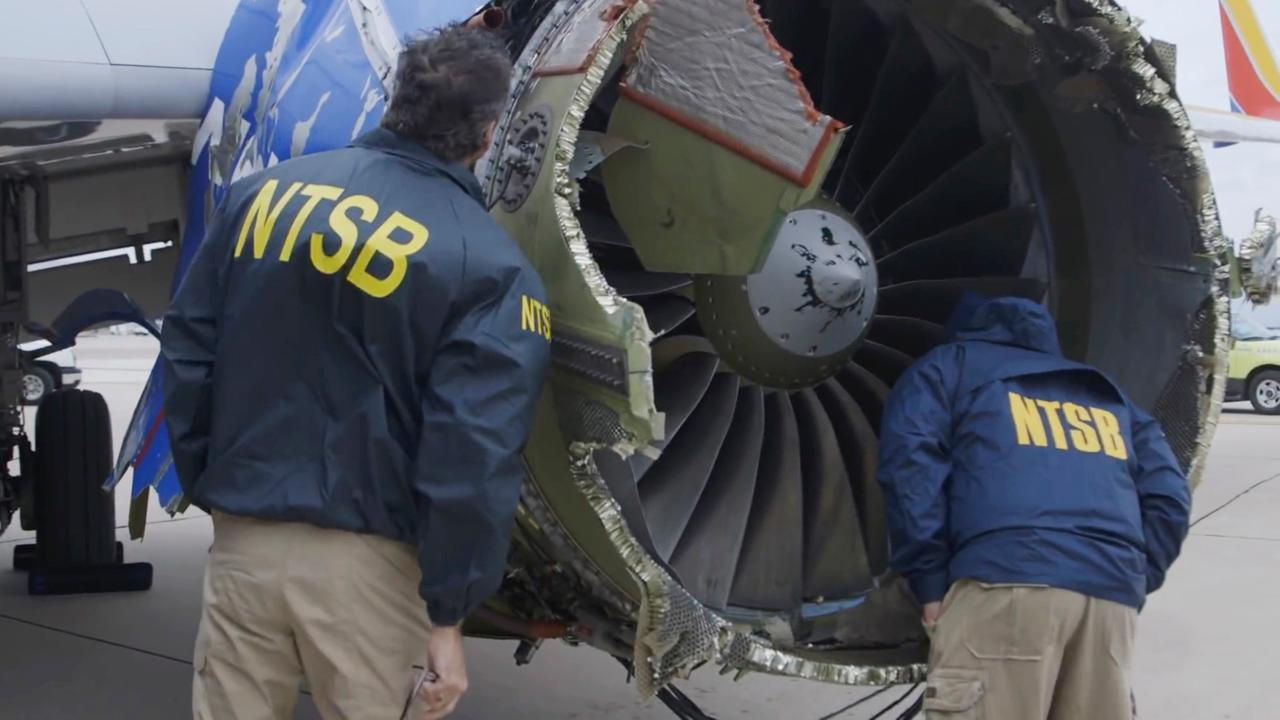Southwest flight calls to mind fatal 1980s disasters
The Southwest Airlines accident that left a passenger dead after she was almost sucked out of a window damaged by pieces of a crippled engine isn’t the first time an airliner lost cabin pressure with deadly consequences.
The preliminary investigation of the exploded engine of the Southwest Airlines jet indicated signs of “metal fatigue,” the National Transportation Safety Board (NTSB) said Wednesday.
In 1989, almost 30 years ago, a cargo door separated at about 22,000 feet on a United Airlines Boeing 747-100 traveling from Honolulu to Sydney. Extensive damage to the fuselage and cabin structure led to what is known as an explosive decompression. Nine passengers were ejected from the airplane and lost at sea. The jumbo jet returned to Honolulu.

A year earlier, a 19-year-old Aloha Airlines Boeing 737-200 left Hilo, Hawaii, for Honolulu and leveled at 24,000 feet. Shortly afterward, the top half of the roof was ripped from the fuselage. A flight attendant who was standing in the fifth row of seats was swept out of the aircraft and killed, while eight others were seriously injured. Despite the gaping hole in the top of the forward section of the jet, the captain was able to land the aircraft in Maui.
The NTSB said corrosion and fatigue damage caused the roof to be stripped off. At the time of the accident, the aircraft had amassed 89,680 flight-cycles (meaning takeoff and landing) and 35,496 flight-hours.
The first officer on duty at the start of the day performed the normal pre-flight, walk-around inspection, according to the NTSB, but found nothing unusual. No other visual inspections were performed by the crew between flights because the airline did not require them.
After the accident, a passenger said she had noticed a “longitudinal fuselage crack” in the upper row of rivets about hallway between the cabin door and the hood of the jet bridge, though she did not report it to a crew member prior to departure.
Not long after the incident, lawmakers in Washington introduced a bill called the “Aviation Safety Research Act of 1988,” which directs the Federal Aviation Administration (FAA) – in part – to initiate maintenance and safety research on “specified aspects of aircraft maintenance and structural technologies.” It became law in November 1988.
In response to the new legislation, the FAA created the National Aging Aircraft Research Program and began research to ensure the “continued airworthiness of high-time, high-cycle aircraft.”
Aloha stayed in business despite economic woes in the early to mid-2000s, which involved multiple bankruptcy filings. In 2008, however, the company ceased operations, citing rising fuel prices and competition with other carriers.




















